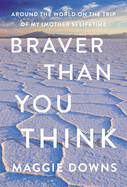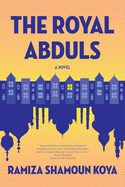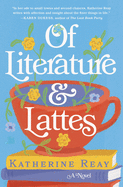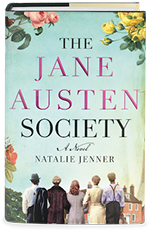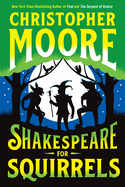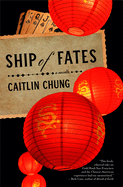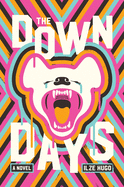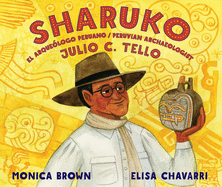Week of Tuesday, May 26, 2020
Have you turned to meditation to relieve some of the stress brought on by the coronavirus? If so, and you want to deepen your practice (or if you haven't but would like to), here are three great books to get you started.
 As the creator of mindfulness-based stress reduction (MBSR) in 1979, Jon Kabat-Zinn is one of those credited with popularizing meditation in the West. Wherever You Go, There You Are: Mindfulness Meditation in Everyday Life (Hachette Books, $17) is his inspiring, often poetic, introduction to meditation, what he calls "the process by which we go about deepening our attention and awareness, refining them, and putting them to greater practical use in our lives."
As the creator of mindfulness-based stress reduction (MBSR) in 1979, Jon Kabat-Zinn is one of those credited with popularizing meditation in the West. Wherever You Go, There You Are: Mindfulness Meditation in Everyday Life (Hachette Books, $17) is his inspiring, often poetic, introduction to meditation, what he calls "the process by which we go about deepening our attention and awareness, refining them, and putting them to greater practical use in our lives."
 After he suffered an on-air panic attack in 2004, ABC News anchor Dan Harris began to meditate. Since then, the self-described "evangelist" for the practice has written a bestselling book, launched a weekly podcast and created a popular app. In January 2016, Harris and meditation teacher Jeff Warren boarded a bus and took off on an 11-day cross-country trip to spread the meditation gospel. Meditation for Fidgety Skeptics: A 10% Happier How-to Book (Spiegel & Grau, $17) recounts that journey, in an entertaining story of their interactions with new and experienced meditators and a solid manual for anyone starting a practice.
After he suffered an on-air panic attack in 2004, ABC News anchor Dan Harris began to meditate. Since then, the self-described "evangelist" for the practice has written a bestselling book, launched a weekly podcast and created a popular app. In January 2016, Harris and meditation teacher Jeff Warren boarded a bus and took off on an 11-day cross-country trip to spread the meditation gospel. Meditation for Fidgety Skeptics: A 10% Happier How-to Book (Spiegel & Grau, $17) recounts that journey, in an entertaining story of their interactions with new and experienced meditators and a solid manual for anyone starting a practice.
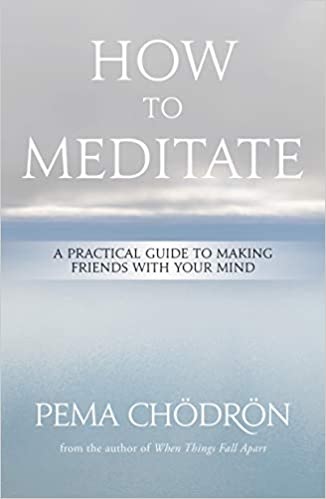 For those ready to wade into slightly deeper waters, there's noted Buddhist teacher Pema Chödrön's How to Meditate: A Practical Guide to Making Friends with Your Mind (Sounds True, $19.95). In addition to describing the basics of mindfulness meditation, Chödrön offers ample guidance about working with difficult emotions and incorporating sounds, sights and bodily sensations into one's practice.
For those ready to wade into slightly deeper waters, there's noted Buddhist teacher Pema Chödrön's How to Meditate: A Practical Guide to Making Friends with Your Mind (Sounds True, $19.95). In addition to describing the basics of mindfulness meditation, Chödrön offers ample guidance about working with difficult emotions and incorporating sounds, sights and bodily sensations into one's practice.
While none of these books will transform you into an instant yogi, they may move you a few steps further along the path to enlightenment. --Harvey Freedenberg, freelance reviewer
Little Eyes
by Samanta Schweblin, transl. by Megan McDowell
Technology twists human relationships to the breaking point in Samanta Schweblin's thrilling dystopian novel, Little Eyes.
Expertly translated from Spanish by Megan McDowell, the novel is a deft and heartrending exploration of technology's capacity for both good and evil. Schweblin (Fever Dream) creates a present day in which new devices called "kentukis" explode in popularity until people are connected to them all over the world. The small devices come in many shapes, resembling bunnies, dragons, even crows. Their "little eyes" are cameras, and they have wheels to move about. Kentuki "keepers" maintain the devices in their homes as they would pets. Kentuki "dwellers" operate the devices remotely from a computer. Once a connection is lost, though, it is lost forever, and the device becomes unsalvageable.
This novel features many moving parts, a panoply of characters all over the world whom Schweblin captures as they fumble over the technology, become obsessed with it, come to both love and hate it. She pulls together recurring characters in a thrilling tapestry. Some of the most poignant moments, though, come from minor characters who make brief appearances. A young dweller from China, for example, falls in love with a dweller in France only to have the device's keeper turn against him. In another standalone scene, a refugee from Sierra Leone becomes a dweller and shares a moment of exultation that takes him out of his dreadful surroundings.
To her credit, Schweblin crafts more than a cautionary tale. Some of the human connections are real, though always tenuous. Little Eyes is an imaginative interpretation of the hyperconnected present delivered by a first-rate author. --Scott Neuffer, writer, poet, editor of trampset
Discover: In her dystopian novel, the acclaimed Argentinian author explores how technology brings people closer and rips them apart.
The Royal Abduls
by Ramiza Shamoun Koya
In her provocative, intense debut novel, The Royal Abduls, Ramiza Shamoun Koya introduces the extended members of a fractured family four years after the horrors of 9/11. Each is attempting to deal with ongoing anti-Muslim challenges, from microaggressions to outright civil rights abuses. Despite a shared history that includes overlapping teenhoods, Amina, her brother Mo and her sister-in-law (and friend since high school) Marcy now seem to have only Marcy and Mo's 11-year-old son, Omar, in common. The Abduls are all living in the same city, for the first time in many years. Evolutionary biologist Amina accepted a post-doc in Washington, D.C., providing a rare chance to reconnect. For Omar, Amina arrives just in time. Stifled by Marcy's liberal white colorblindness and neglected because Mo's work excuses enable avoiding family responsibilities, Omar is starved for cultural connection--so unlike Amira and Mo (conveniently short for Mohammad), who grew up detached from their immigrant parents' Indian Muslim heritage.
Alternating Amina's and Omar's points of view, Koya deftly presents dual perspectives as she thoughtfully, pointedly confronts race, white privilege, cultural appropriation and erasure in a volatile new world. Koya, who was born in California to a Fijian father and Texan mother and identifies as Indo-Fijian and now lives in Oregon, channels her own multi-layered, multiculti, mixed-race background with affecting, potent results. Koya has been in the news for bittersweet reasons recently as fellow authors and industry advocates show their support since the reveal of her terminal cancer diagnosis. That her debut may be her finale adds further gravitas to an already sobering, resonating narrative. --Terry Hong, Smithsonian BookDragon
Discover: This provocative debut explores the growing relationship between an Indian American biologist and her mixed-race tween nephew amid post-9/11 hostility.
Of Literature and Lattes
by Katherine Reay
Readers will be eager and charmed to return to Winsome, Ill., where several characters from The Printed Letter Bookshop and a host of new ones richly populate the literary landscape that Katherine Reay (The Austen Escape) presents in Of Literature and Lattes.
Thirty-one-year-old Alyssa Harrison left Winsome on bad terms with her overbearing mother, Janet, a bookstore employee who cheated on Alyssa's dad. For several years, Alyssa worked in Silicon Valley in California at a health-centric start-up that was ultimately deemed fraudulent by the FBI. With her career in shambles and money tight, Alyssa is forced to swallow her pride and return to her childhood home in Winsome to regroup and put the pieces of her life back together. What will it take for Alyssa and her mother, living back under the same roof, to make amends and finally bury the hatchet?
As Alyssa reacclimates to the quaint small town, she frequents the coffee shop and befriends the owner, Jeremy Mitchell, a Seattle transplant who overhauls the shop into a more upscale meeting place the locals resist. Jeremy enlists Alyssa's help to drum up more business and balance the books. Along the way, he battles with his ex-wife, who tries to keep him from his seven-year-old daughter.
A budding relationship between Alyssa and Jeremy--and their quests to overcome their respective challenges--anchors the feel-good, wholesome poignancy of the narrative. Equally appealing secondary characters and storylines bind this redemptive novel's overarching themes: the power of forgiveness, friendship and love. --Kathleen Gerard, blogger at Reading Between the Lines
Discover: A newcomer and a woman returning to her Midwestern hometown spark a romance that helps them reinvent their lives.
The Jane Austen Society
by Natalie Jenner
In The Jane Austen Society, a fictionalized account of the Society's founding, Canadian debut novelist Natalie Jenner draws on the broad, timeless appeal of Jane Austen for a charming story of an unlikely collection of readers who band together to save what remains of Austen's home. Along the way, their shared passion for the author of Pride and Prejudice brings hope, healing and surprising connections into each of their lives in ways that will gratify bibliophiles in general and Janeites in particular.
Jenner begins in Chawton, Hampshire, in 1932, when farm laborer Adam Berwick meets an American girl "so beyond him in her beauty as to be almost otherworldly." She has come to Chawton to see "the little steward's cottage where the Gosport and Winchester roads intersected, and where Jane Austen had finally found a home for her writing after years of dependency." The house is still owned by the Knights, the family that adopted Jane's brother as their heir. A fan of H. Rider Haggard's adventure stories, Adam nevertheless responds to her heartfelt insistence that he read Austen's novels. Adam still carries the pain of losing his chance at a future of study after his elder brothers died in World War I, his father died of Spanish flu, and Adam and his mother had to sell the family land to pay off their debts. Adam envies the "contented state" he observes in the American girl and decides that if reading Austen can give him the key to peace, read Austen he will.
More than a decade later, his discovery of a Georgian-era toy in a rubbish heap near the steward's cottage leads Adam to an epiphany: though visitors occasionally come to see Austen's former home, no one has acted to preserve the site and her legacy for future generations. He realizes he may be "the only one paying attention to the rapid shortening of the days, the rubbish left by the side of the road, and the neglected and forgotten past." Now a dedicated Austen reader, Adam approaches the local doctor with the idea that they should purchase and renovate the cottage as a memorial where future generations can honor Austen and feel a personal connection to the beloved author. Realizing the size of the undertaking, Dr. Gray suggests they recruit others to join the cause, and so the first Jane Austen Society is born. Its membership includes Adeline Grover, a war widow and former teacher; Andrew Forrester, a solicitor for the family who owns the cottage; Evie Stone, a maid who secretly catalogues the Knight family library; Frances Knight, soon to be the last of the family line; and Mimi Harrison, a famous American actress with a rich and ruthless fiancé. Despite their carefully laid plans, though, the Society faces a struggle: Frances's elderly father, a man who always disliked Austen tourists visiting Chawton, is dying. The terms of his will make any sale of the cottage extremely disadvantageous for Frances, possibly in a bid to prevent its repurposing as a museum. If the Society is to preserve Austen's legacy, they must decide what they are willing to sacrifice.
In true small-village fashion, a complex web of relationships connects the characters, including long friendships, thwarted love and quiet yearning. Observant readers may notice that Jenner uses these links to pull subtle shades of Austen into the plot. The Society members' conversations frequently turn to literary criticism, and they discuss their love of Elizabeth Bennett while disagreeing over Emma Woodhouse's merits--like today's Janeites. However, Jenner's characters are not relegated to mere mouthpieces of fan service. Instead, they possess the universal human needs, doubts and lack of self-awareness that makes Austen's characters ring true. As in Persuasion, a lost love still lingers. One of the male characters recognizes the signs of attachment in Emma's Mr. Knightley but overlooks the same signals in himself. Jenner even includes precisely the sort of shrewd-minded, empty-hearted opportunist Austen used to create conflict. Knowledge of the works referenced will add to the experience, but the elegant homage that emerges is not metafictive enough for prerequisites. The Jane Austen Society stands on its own as a moving examination of the power of story.
Like Adam, many of the characters turn to Austen for respite from grief and trauma, experiencing "an inexplicable anxiety over whether the main characters would find love and happiness, while all the while knowing, on some different parallel interior track, that it was all going to work out in the end." Jenner creates the same feeling of safe suspense. Even though Chawton House's current existence makes the Society's success a foregone conclusion, the desire to see its members come together and rise above their individual struggles builds emotional investment in their goal. While Jenner's narrative is not the true story of the Society's founding, she has created such a sweet and graceful version that readers will likely wish it were. --Jaclyn Fulwood
Mystery & Thriller
This Is How I Lied
by Heather Gudenkauf
A small-town murder gets covered up by big-time falsehoods in the heart-pounding mystery thriller This Is How I Lied by Heather Gudenkauf (The Weight of Silence).
Winter, 1995. Rural Iowa. Fifteen-year-old Maggie O'Keefe and 13-year-old Nola Knox find the beaten and murdered body of 16-year-old Eve Knox. Twenty-five years later, the case remains unsolved, when some kids find Eve's missing boot in the caves where she was murdered. Local police scramble to reopen the case because newer DNA technology might finally reveal Eve's killer. Maggie, now 40 and recently promoted to police detective, gets the case. When Nola hears about it, she begs Maggie to frame Eve's abusive boyfriend as the killer. Maggie refuses, but Nola threatens to expose the bloody fight between Maggie and Eve the night Eve was murdered. Did Maggie kill Eve? Or was it a creepy transient who killed Eve? It's impossible to uncover truth when best friends and family lie to cover it up.
Gudenkauf weaves hand-wringing drama into Nola's and Maggie's desperately opposing agendas for the truth by making each character's argument plausible. Early on, Gudenkauf sets up Maggie as a heroine readers should root for, but then slowly reveals the dark secret behind why she attacked Eve. Nola, thought by the townspeople to be a mentally unstable torturer of animals, could be an intense scientist. Kudos to this author for reminding readers the best stories challenge our surface judgment of characters and people in general. --Paul Dinh-McCrillis, freelance reviewer
Discover: Though she may be complicit, DNA evidence forces police detective Maggie O'Keefe to reopen the 25-year-old unsolved murder of her best friend.
Shakespeare for Squirrels
by Christopher Moore
He's back! Pocket washes up on a Grecian beach in Shakespeare for Squirrels, Christopher Moore's third hilarious adventure (after Fool and The Serpent of Venice) starring the Fool of Dog Snogging, along with the great beef-brained Drool and the chapeau-obsessed (perfect forking French, eh?) Jeff the monkey. Set adrift by pirates, the trio is rescued by Cobweb the fairy in a nick-of-time turn of fortunes that leads to magical, bawdy, exuberant antics, with a murder mystery thrown in.
As in his previous 16 novels, (Lamb; Sacré Bleu) Moore parodies classic works, and A Midsummer Night's Dream is the perfect framework for Shakespeare for Squirrels, with bits from mythology and the Bard. In a delightful afterword, Moore shares how he blended these elements; reading this first might enhance appreciation of Pocket et al. Nighttime frivolity reigns, but danger is real. After just one night in Greece and a surprise shag with Cobweb, whose lust for Pocket is insatiable, Pocket is wrongly accused of killing Puck, the esteemed jester. He must find the murderer, while convincing both Tatiana, queen of the fairies, and Theseus, ruler of Athens, that he is also fulfilling their commands. And Oberon, the Shadow King, and his goblins are not to be slighted. "The play's the thing," of course, and in a rollicking climax the Mechanicals, a troupe of local merchants, perform for their lives, Pocket scripting from the stage. "We have no master but the road," Pocket announces when all has ended well. --Cheryl McKeon, bookseller, Market Block Books, Troy, N.Y.
Discover: The irrepressible Christopher Moore reprises Pocket of Dog Snogging and a comical supporting cast of fairies, goblins and more in a fresh adaptation of A Midsummer Night's Dream.
Science Fiction & Fantasy
Ship of Fates
by Caitlin Chung
The art of storytelling features an engrossing tale and pitch-perfect delivery; Caitlin Chung excels at both in her debut, Ship of Fates. A young woman listens as Mei, an ancient lighthouse keeper, combines the legend of "Maker of Gold Mountain" with her tragic life story. The young woman hears "these stories--the ones about her, about this place, and about the old place, too."
The legend begins in China in 1000 BC, where Mei, a beautiful woman betrothed to a foreigner, steals her dowry gold and rides a whale across the sea to a rocky coast with a welcoming bay. There she throws the gold into rivers and hills "where no gold was before, nor was ever meant to be." Although she's free, she's also cursed. She must keep fires going, "a mirror for the feral hope of her search" until she recovers every nugget she stole.
In 1849, Mei still lives in San Francisco, "a city stained yellow--yellow in the flowers and gold in the waters." She's collected an unimaginable amount of gold in her lighthouse, but it's still not enough. Desperate to be free, she entraps another young woman, only to see this selfish act backfire. Mei is still "surrounded by an amount of gold as dense and deep as need, as soft as a desperate woman's conviction." Thus Mei, the maker of Gold Mountain, remains in her lighthouse to this day. Desire, deceit and regret come together in this spellbinding mixture of legend and heartbreak. --Cindy Pauldine, bookseller, the river's end bookstore, Oswego, N.Y.
Discover: This brief debut novel, set in Gold Rush-era San Francisco, tells the mythical and tragic story of a woman plotting to remove a curse from centuries ago.
The Down Days
by Ilze Hugo
The Down Days have come to South Africa. A pandemic of contagious mirth, fittingly called the Laughter or the Joke, has seen that country quarantined and its capital, Cape Town, rechristened Sick City. In this future zone of near anarchy and constant danger, laughing is banned and citizens are required to wear masks at all times (prohibited pornography now features lips and giggling). The Down Days, South African writer Ilze Hugo's debut novel, follows a disparate cast of characters struggling to survive in Sick City, where life and death, past and present are more fluid than they seem.
With the borders of South Africa sealed, Sick City's residents make ends meet in a variety of often unsavory ways. Sans is a "ponyjacker," a man who steals women's hair for valuable weaves. Faith, an amateur "truthologist," collects dead bodies for a living. Orphan girl Tomorrow cares for her baby brother, whose kidnapping sends her to Faith for help. While the other two search for the abducted child, Sans must track down a missing courier carrying most of his money. Gradually these narratives intersect with the help of a sin-eating psychic, a data broker, the head of a secret library and a multitude of other colorful characters.
These many threads of Down Days don't always seamlessly stitch together. Occasionally the sheer number of disparate plot elements becomes overwhelming or distracting, but Hugo still manages to satisfy. Readers seeking a fun sci-fi/fantasy mystery set in a weird and sadly familiar dystopia will find The Down Days uplifting. --Tobias Mutter, freelance reviewer
Discover: This reality-bending mystery is set in a future South Africa quarantined by an epidemic of deadly laughter.
Biography & Memoir
Here We Are: My Friendship with Philip Roth
by Benjamin Taylor
"There was no dramatic arc to our life together," Benjamin Taylor (Proust: The Search) writes in Here We Are: My Friendship with Philip Roth. "It was as plotless as friendship ought to be." Here We Are is this plot-free fellowship's enchanting coda, which had the late novelist's blessing: "Maybe write a book about our friendship," Roth once told Taylor.
Taylor estimates that between their first meeting in 1994 and Roth's death in 2018, they spent literally thousands of hours together, often at Roth's Manhattan apartment or Connecticut retreat. They talked about "everything" but especially, it would seem, Roth's work. Taylor laces Here We Are with a critic's observations (Sabbath's Theater is Roth's "hymn of praise to the sex drive out of season") and confirms that Roth took revenge on his enemies by turning them into satirical characters in his books: "The appetite for vengeance was insatiable. Philip could not get enough of getting even."
Taylor's bemusement with his friend ripples through Here We Are. He touches on Roth's idiosyncrasies (Roth had low standards in restaurants) and on his big opinions on small matters (Roth clashed with Taylor over whether Bette Davis or Ava Gardner held more significance). Taylor also shares snippets from their darker conversations, about Roth's stay at a psychiatric facility in 1993 and his physical decline. By the time Taylor writes of Roth, "He was the chosen parent of my middle age," readers will have already spotted in the childless Roth an unlikely but eager father figure. --Nell Beram, author and freelance writer
Discover: Personal recollections and literary criticism animate this affecting homage to literary giant Philip Roth.
Science
Liquid Gold: Bees and the Pursuit of Midlife Honey
by Roger Morgan-Grenville
The opening pages of Liquid Gold: Bees and the Pursuit of Midlife Honey by Roger Morgan-Grenville offer a delightful window into the distinctly British adventure about to unfold in this entertaining memoir. A chance meeting between two cricket fans at a pub in West Sussex leads to a beekeeping partnership, and for the author the benefits go far beyond anything he could have imagined. His memoir is a toast to the humble honeybee, the joys of unexpected friendship, midlife adventures and the slow, deliberate rhythm of nature.
Morgan-Grenville (Unlimited Overs) and his acquaintance from the pub, Duncan, began their new venture in the same way many such ventures begin: with a Google search, since they knew nothing about bees. Before long they acquired a honeybee colony from a third-generation Ukrainian bee farmer in Oxfordshire and launched their enterprise. Liquid Gold is fascinating for the insights it shares on the daily lives of bees, from the queen's mating journey to the painstaking process of collecting nectar and the group mentality that helps bees survive winters. The author's dry humor and comic observations on marriage, middle age and the long wait for honey make for a companionable read, highlighted with gorgeous imagery of the English countryside with its charming hedgerows and the near-spiritual experience of tasting one's first honey harvest.
Liquid Gold is a gentle call to action to preserve the dwindling worldwide population of honeybees as well as a reminder that connection to the natural world, no matter how small, is good for the soul. --Shahina Piyarali, writer and reviewer
Discover: With lively commentary on the future of the United Kingdom, an Englishman finds that beekeeping is just the thing to help him deal with middle-age insecurities while doing his part for the climate.
Travel Literature
Braver than You Think: Around the World on the Trip of My (Mother's) Lifetime
by Maggie Downs
As a child, journalist Maggie Downs spent hours poring over National Geographic with her mother, hatching plans for the adventures they would have together. But when her mother was diagnosed with Alzheimer's disease, Downs had to accept that many of their plans would never happen. As her mother's condition worsened, Downs--determined to travel for both their sakes--headed off on a trip around the world. Her first memoir, Braver than You Think, chronicles Downs's inner and outer journey to follow her curiosity and make her peace with loss.
On the surface, much of Downs's travelogue reads like a cautionary tale: she stays in multiple grubby hostels, sustains a monkey bite in Bolivia, lands in Egypt just as the Arab Spring uprising catches fire, and hitches far too many rides with strangers. But the anecdotes are vivid, sometimes humorous, even when she's confused and sad. Downs remains alert and curious, no matter how exhausted she is. She also draws interesting parallels between her physical odyssey and her mother's battle with Alzheimer's: the presence of chance and randomness, journeys not chosen, moments of sudden and strange beauty that appear unexpectedly. In Petra, near the end of her travels, she finds "consolation, an assurance that it's possible to weather time and tragedy and still be a thing of formidable beauty."
Compelling and moving, Downs's memoir will appeal to fans of travel writing and anyone who has walked with a loved one through a difficult decline. --Katie Noah Gibson, blogger at Cakes, Tea and Dreams
Discover: In this vivid memoir, a woman chronicles her trip around the world while trying to reckon with the loss of her mother.
Children's & Young Adult
The Henna Wars
by Adiba Jaigirdar
This debut YA novel about self-acceptance in the face of intolerance and ignorance is tactful, sincere and culturally immersive.
When 16-year-old Nishat decides to come out to her Bengali Muslim parents, she hopes that because they have a "love marriage" they'll be able to accept her for who she is. Instead, they think she's "confused" and needs time to "work it out." Shattered, Nishat distracts herself with a student-run business competition at her secondary school in Ireland. Encouraged by her younger sister, Nishat starts a henna design business only to learn that Flávia, a crush from primary school (who is not Bengali), is also running a henna business. As the competition intensifies, so do Nishat's and Flávia's feelings for each other. Nishat must choose between accepting her parents' belief that her desire is shameful and doing what she feels is right and natural.
In The Henna Wars, Adiba Jaigirdar explores sexual and cultural identity and how both shape decisions and relationships. She shows the dichotomy of wanting to break from the constraints of tradition while still maintaining strong ties to culture and beliefs; for example, Nishat feels that Bengali is "this weird, suffocating culture" that dictates who she should be, but the art of henna is her calming agent, making her forget about everything else. This contrast opens up important discussions about racism, conformity and appropriation. Jaigirdar balances these headier topics and adds another layer of approachability to Nishat's story with a realistic depiction of sibling relationships, showing sisters who are each other's worst critics and biggest cheerleaders. Authentic and inspiring, this debut is one to seek out. --Lana Barnes, freelance reviewer and proofreader
Discover: Religion, culture and identity clash in this queer YA romance about two girls with competing henna businesses.
Sharuko: El arqueólogo peruano Julio C. Tello / Peruvian Archaeologist Julio C. Tello
by Monica Brown, illus. by Elisa Chavarri, transl. by Adriana Domínguez
Monica Brown, Elisa Chavarri and Adriana Domínguez's accessible bilingual text, Sharuko, gives children access to the life of Julio C. Tello, "the first and greatest Indigenous archaeologist of Peru."
As a boy, Julio dauntlessly searched for bones and skulls in the Andes Mountains. Because of his fearlessness, Julio was nicknamed Sharuko, or "brave," in Quechua, the Indigenous language of his tribe and the "language of the great Inca Empire." Sharuko first studied medicine, but his absorption in "the stories of his ancestors" and his attraction to the physical remnants of the past led him eventually to anthropology and archeology. He combined his formal study with his intimate knowledge of the language and people still living in Peru; his care in and devotion to re-creating Peruvian history made him an archeologist "still beloved by Peruvians."
Both Brown and Chavarri are of Peruvian ancestry and express in notes that sharing this story was important to them. Chavarri's colorful watercolor and gouache paintings artistically and accurately depict Sharuko's discoveries of stone carvings at Chavín de Huántar, mummies and textiles in Paracas and his boyhood findings of skulls in Pariacaca. Chavarri's note mentions how her research influenced her renderings of the artifacts. Brown, who has written about many important Latinx figures (Frida Kahlo and Her Animalitos) succeeds again in making the passionate pursuit of a profession exciting for young readers. Domínguez's able Spanish translation of Brown's original English text allows this book to be enjoyed by a broader audience. --Melinda Greenblatt, freelance book reviewer
Discover: A curious young Peruvian boy grows up to become a famous archeologist in this vibrant, bilingual picture book biography.
| Advertisement RECLAIM YOUR JOY WITH HAVING IT ALL |



